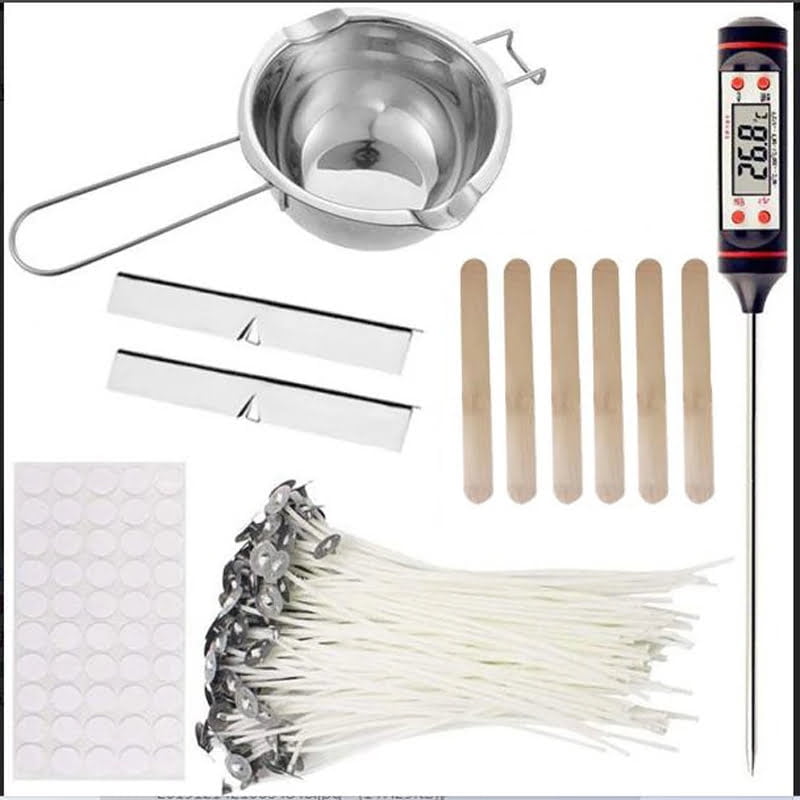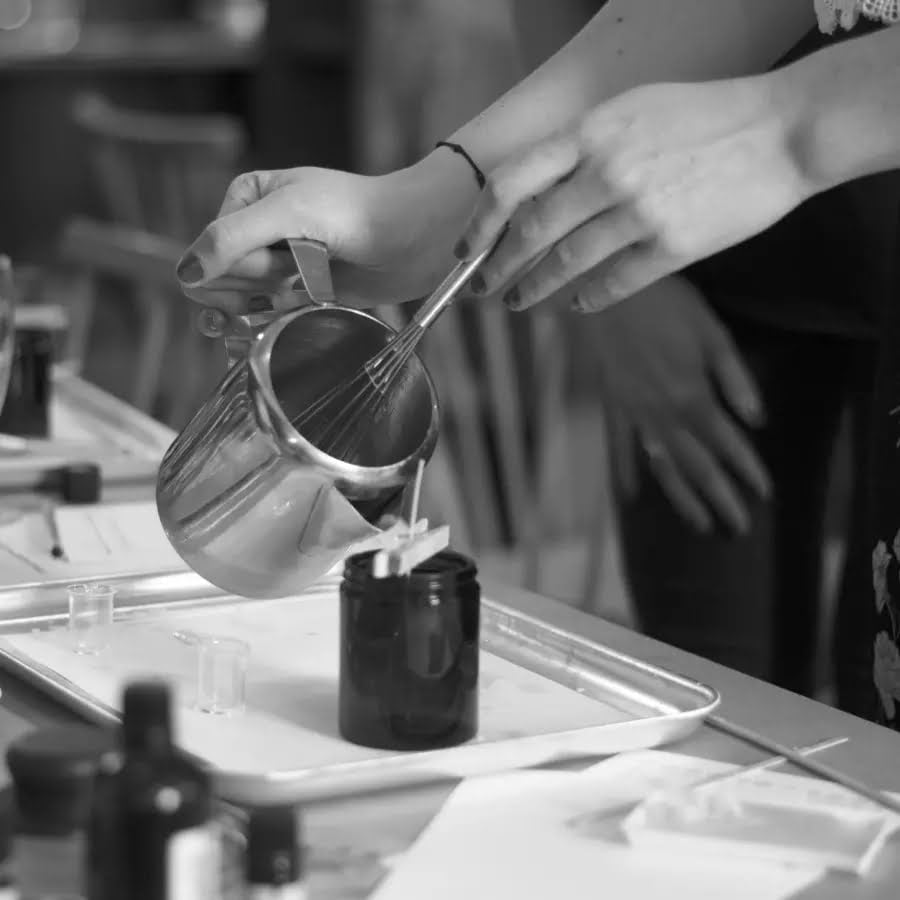Candle making is an art that requires precision and attention to detail. One crucial aspect of this craft is temperature control. The ability to measure and monitor the temperature throughout the candle-making process ensures a successful result. However, many beginners may wonder if they can use a meat thermometer for this purpose.
Temperature control in candle making plays a significant role in determining the quality and characteristics of the final product. Different waxes have specific melting and pouring points, and slight variations in temperature can affect fragrance retention, color distribution, and even burn time. Therefore, having a reliable thermometer is essential to achieve consistent results.
While meat thermometers are designed for measuring the internal temperature of cooked meats, some individuals consider using them as an alternative for candle making due to their affordability and availability. However, it is important to determine whether these kitchen tools are suitable or safe for this specific task. In this article, we will explore the feasibility of using a meat thermometer for candle making and delve into the reasons behind its pros and cons.
By understanding the importance of temperature control in candle making and the potential usefulness of meat thermometers, beginners can make informed decisions about their equipment choices. Whether it’s utilizing alternative options or investing in specialized tools specifically designed for this craft, the goal remains consistent – achieving perfection by accurately gauging temperatures during every step of the candle-making process.
Understanding the Purpose and Function of Meat Thermometers
What is a Meat Thermometer?
A meat thermometer is a kitchen tool that allows cooks to measure the internal temperature of various meats to ensure they are cooked thoroughly and at a safe temperature. It typically consists of a long metal probe that is inserted into the meat, and it provides an accurate reading of the temperature within seconds. This enables chefs to determine whether or not the meat has reached the desired level of doneness.
The Function of Meat Thermometers
Meat thermometers work by utilizing sensors within the probe to detect heat, allowing them to accurately measure temperature. They can be either analog or digital, with digital thermometers generally being more precise and easier to read. The probe is inserted into the thickest part of the meat away from any bones, fat, or gristle, as these can affect the accuracy of the reading.
The purpose of a meat thermometer is to ensure food safety by preventing undercooked or overcooked meals. By measuring the temperature at its core, it helps cooks determine when it’s safe for consumption while also retaining quality and flavor.
Benefits and Limitations for Candle Making
While meat thermometers are primarily designed for cooking purposes, some candle makers have considered using them for monitoring wax temperatures during the candle-making process. However, there are both pros and cons associated with this practice.
One benefit of using a meat thermometer for candle making is its affordability and accessibility since many people already have one in their kitchen. Additionally, meat thermometers provide quick readings that allow candle makers to monitor their wax temperatures accurately.
However, there are limitations when using a meat thermometer for candle making. Since it was not specifically designed for this purpose, its temperature range may not be suitable for candle-making needs.
Meat thermometers generally do not go as low as room temperature readings required for melting wax or as high as temperatures needed for adding fragrance oils. Furthermore, the design and construction of meat thermometers may not be suitable for the candle-making process, potentially leading to inaccurate or inconsistent temperature readings.
Exploring the Different Types of Meat Thermometers
Digital Meat Thermometers
Digital meat thermometers are one of the most common types of meat thermometers available on the market. These thermometers provide accurate temperature readings within seconds, making them convenient and easy to use for candle making. They usually have a stainless steel probe that can be inserted into the wax to measure its temperature. Digital meat thermometers also often come with features such as alarms or timers to alert you when your desired temperature is reached.
Infrared Meat Thermometers
Infrared meat thermometers, also known as laser thermometers, are another type of thermometer commonly used in the cooking industry. While they may not be specifically designed for candle making, they can still be used for temperature measurement during the candle-making process.
Infrared thermometers work by measuring the infrared radiation emitted by an object to determine its temperature. To use this type of thermometer for candle making, simply aim the laser at the surface of the molten wax and take a reading from a safe distance.
Analog Meat Thermometers
Analog meat thermometers are traditional-style thermometers that consist of a metal stem attached to a dial display. These types of thermometers can also be utilized for candle making, although they may not provide as quick or accurate readings as digital or infrared ones. Analog meat thermometers require calibration before use and should be adequately cleaned between uses to ensure accurate measurements.
While there are different types of meat thermometers available on the market, it’s important to note that not all may be suitable or ideal for candle making due to their specific design features and limitations. It’s essential to choose a thermometer that is capable of accurately measuring temperatures within the range required for your specific candle-making process.
Pros and Cons of Using a Meat Thermometer for Candle Making
Using a meat thermometer for candle making may seem like an unconventional choice, but it does have its pros and cons. Here are some advantages and disadvantages to consider before using a meat thermometer in your candle-making process.
Pros:
- Accessibility: Meat thermometers are readily available in most households or can be easily purchased at an affordable price. This makes them a convenient option for those who do not want to invest in specialized equipment.
- Temperature Range: Most meat thermometers have a wide temperature range, which allows them to measure temperatures high enough for candle making. This versatility can be advantageous when working with different types of wax that require specific melting points.
- Accuracy: While meat thermometers are designed for measuring internal temperatures of meats, they can still provide reasonably accurate readings for checking the temperature of melted wax.
Cons:
- Safety Concerns: One major drawback of using a meat thermometer for candle making is the safety risk involved. These thermometers are not specifically designed for working with hot wax and may not have adequate heat resistance or insulation properties. This could lead to melting or damage to the thermometer itself, posing potential hazards.
- Lack of Precision: Meat thermometers typically have larger probes that may not be suitable for measuring precise temperatures required in candle making. The larger probe diameter can also affect the accuracy of readings, especially when dealing with small amounts of wax or when trying to achieve precise temperature adjustments.
- Limited Features: Unlike specialized candle-making thermometers, meat thermometers do not come equipped with additional features such as clip-on attachments or adjustable arms that make temperature measurement easier and more efficient.
While using a meat thermometer might be tempting due to its accessibility and wide temperature range, it is important to prioritize safety when engaging in any craft involving hot materials like melted wax.
To ensure accurate temperature control while avoiding the risks associated with using a meat thermometer, it is recommended to invest in a thermometer specifically designed for candle making. These specialized thermometers are made with materials that can withstand high temperatures, have thinner probes for precise measurements, and include additional features to make the process easier and safer.
Overall, while a meat thermometer may be a quick fix for checking temperatures in a pinch, it is not the ideal tool for accurate temperature control in candle making.
Can You Use a Meat Thermometer for Candle Making? Debunking the Myth
The idea of using a meat thermometer for candle making may seem tempting, especially if you already have one lying around in your kitchen. However, it’s important to debunk the myth and understand why a meat thermometer is not suitable for this purpose.
One of the main reasons why a meat thermometer cannot be used for candle making is the temperature range. Meat thermometers are designed to measure temperatures up to about 200 degrees Fahrenheit (93 degrees Celsius), which is well below the melting point of most candle waxes.
In contrast, candle wax needs to be heated to specific temperatures that can range from 120 degrees Fahrenheit (49 degrees Celsius) all the way up to 180 degrees Fahrenheit (82 degrees Celsius), depending on the type of wax being used.
Using a meat thermometer may result in inaccurate temperature readings and lead to unsuccessful or unsafe candle-making experiences. Inaccurate temperature control can affect various aspects of candle making, including scent throw, burn time, and consistency of the finished product. To ensure successful results, it’s crucial to use a thermometer specifically designed for candle making that can accurately measure within the required temperature range.
Pros and Cons of Using a Meat Thermometer for Candle Making
While using a meat thermometer for candle making is not recommended, it’s still essential to evaluate its pros and cons to better understand its limitations.
Pros:
- Cost-effective: If you already have a meat thermometer at home, using it may seem like a cost-effective solution instead of purchasing a new device.
- Instant availability: Unlike specialized thermometers for candle making, a meat thermometer can easily be found in most households.
- Multi-purpose use: A meat thermometer can also be used for cooking purposes if not designated solely for measuring temperatures in candle making.
Cons:
- Accuracy issues: Meat thermometers are not calibrated within the specific temperature range required for melting different types of candle waxes.
- Limited temperature range: The maximum temperature that can be measured by a meat thermometer is often far below the necessary melting point of candle wax.
- Safety concerns: Depending on the materials used in the construction of a meat thermometer, it may not be suitable for handling hot and potentially flammable substances.
The Dangers of Using a Meat Thermometer for Candle Making
Using a meat thermometer for candle making may seem like a convenient and cost-effective option, but it can actually pose several dangers. Here are some of the potential risks associated with using a meat thermometer for candle making:
- Contamination: One of the biggest concerns when using a meat thermometer for candle making is the risk of contamination. Meat thermometers are designed to be used with raw or cooked food, which means they may have come into contact with bacteria or other harmful substances.
When you use a contaminated meat thermometer in your candle wax, it can introduce these contaminants into your candles. This can not only affect the quality and appearance of your candles but also pose health risks if you plan to burn them. - Inaccurate temperature readings: Another danger of using a meat thermometer for candle making is that it may not provide accurate temperature readings. Meat thermometers are calibrated for measuring the internal temperature of meat, which is different from measuring the melting point or ideal pouring temperature of wax.
The temperatures required for successful candle making can vary depending on the type of wax and additives being used. Using an inaccurate thermometer can lead to underheating or overheating of the wax, resulting in poor-quality candles or even dangerous situations such as fire hazards. - Damage to the thermometer: Candle making involves working with hot wax, which can damage delicate equipment like meat thermometers. The high temperatures involved in melting and pouring wax can cause the plastic parts of a meat thermometer to melt or become deformed, rendering it unusable or unreliable for future temperature measurements.
In order to ensure safe and successful candle making, it is recommended to use thermometers specifically designed for this purpose rather than relying on meat thermometers. In the next section, we will explore alternative options for accurate temperature control in candle making that are both safe and reliable.
Alternatives to Meat Thermometers for Accurate Temperature Control in Candle Making
Accurate temperature control is crucial in candle making as it ensures the quality and consistency of the finished product. While meat thermometers may seem like a convenient option for measuring temperature, there are alternative tools specifically designed for candle making that offer more precise readings.
One popular alternative to meat thermometers is a candy thermometer. Candy thermometers are specifically designed to measure high temperatures accurately, making them ideal for candle making.
They typically have a long probe and a clip or hook to secure it to the side of the container, allowing for easy and safe measurement without the risk of the thermometer falling into the hot wax. Candy thermometers also often have temperature ranges that align with the needs of candle makers, typically reaching up to 400 degrees Fahrenheit or higher.
Another option is an infrared thermometer. These thermometers use infrared technology to measure surface temperatures without direct contact. They can quickly and accurately measure the temperature of hot wax from a distance, providing instant readings without the need for immersion or waiting time. Infrared thermometers are particularly useful when working with larger batches of wax or when measuring temperatures in hard-to-reach areas.
A third alternative is a digital probe thermometer with a flexible tip. These thermometers feature a metal probe attached to an electronic display that shows accurate temperature readings. The flexible tip allows for easier insertion into containers or molds while still maintaining stability during measurement. Digital probe thermometers often have additional features such as programmable alarms and memory functions, making them versatile tools for precise temperature control in candle making.
Tips and Tricks for Proper Temperature Measurement in Candle Making
When it comes to making candles, proper temperature measurement is crucial for achieving the desired results. Here are some tips and tricks to ensure accurate temperature control in your candle making process.
- Use a thermometer specifically designed for candle making: While using a meat thermometer may seem like a convenient option, it is not ideal for candle making. Instead, invest in a thermometer that is specifically designed for measuring temperatures in candle wax. These thermometers are often equipped with features such as long probes and easy-to-read dials or digital screens, making them more suitable and accurate for this purpose.
- Measure the temperature at different stages: It is important to measure the temperature of your wax at different stages of the candle-making process. For example, when melting the wax, it should reach a specific temperature range before adding any additives or fragrance oils.
Similarly, when pouring the melted wax into containers or molds, it should be at an optimal temperature to avoid issues like sinkholes or cracking. By regularly measuring the temperature at each stage, you can ensure that your candles turn out exactly as intended. - Avoid direct contact with the thermometer: When measuring the temperature of your candle wax, avoid placing the thermometer directly on the bottom of the container or touching any other surfaces. This can lead to inaccurate readings due to variations in heat distribution within the container. Instead, suspend the thermometer in the center of the liquid wax without allowing it to touch any surfaces. This will help you get a more precise reading of the overall temperature.
- Maintain consistency: To achieve consistent results in your candle making, maintain consistent temperatures throughout the process. This includes keeping an eye on both the ambient room temperature and the temperature of any additional ingredients or tools you may be using. Sudden changes in temperature can affect how your candles set and cure, so aim for stability throughout.
By following these tips and tricks for proper temperature measurement in candle making, you can greatly enhance the quality and consistency of your homemade candles. Remember, accurate temperature control is key to achieving the desired appearance, scent, and burn time in your finished candles.
Conclusion
In conclusion, when it comes to candle making, it is essential to choose the right thermometer for accurate temperature control. While meat thermometers may seem like a convenient option due to their availability and affordability, they are not suitable for candle making.
The purpose and function of meat thermometers are designed specifically for measuring the internal temperature of meats during cooking, and they are not calibrated or designed to measure the melting point of wax or the temperatures required for candle making.
Using a meat thermometer for candle making can pose several dangers. The most significant risk is that the thermometer may not provide accurate readings, which can result in inconsistent or improper melting of wax and potentially affect the quality and performance of the finished candles.
Additionally, meat thermometers are typically made from materials that may not be heat resistant or designed to handle prolonged exposure to high temperatures. This can lead to the thermometer malfunctioning or even melting, causing potential harm to yourself or your workspace.
Instead of using a meat thermometer, consider investing in a thermometer specifically designed for candle making. These thermometers are calibrated and equipped with features necessary for accurate temperature measurement in this craft. Look for thermometers that have a wide temperature range and a probe long enough to reach into your melting pot or container. It is also beneficial to choose a thermometer with clear markings or digital displays for easy reading.
Overall, choosing the right thermometer is crucial in achieving optimal results in candle making. By selecting a thermometer specifically designed for this craft, you can ensure precise temperature control, leading to better-quality candles and a safer working environment. Take the time to research different options available on the market and invest in a reliable thermometer that will enhance your candle-making experience.
Frequently Asked Questions
What kind of thermometer do you need to make candles?
To make candles, you typically need a thermometer that can measure temperatures ranging from around 100°F to 200°F, as this is the range at which most candle waxes melt and are suitable for pouring into molds or containers. A specifically designed candle thermometer usually works best for this purpose since it provides accurate readings within the required temperature range.
These thermometers are often long and slender, allowing easy insertion into the wax while it’s melting, and they may have a clip or some mechanism to secure them to the container.
Can you use a candy thermometer for candle making?
Yes, you can definitely use a candy thermometer for candle making in certain cases. Candy thermometers are designed to measure high temperatures, typically up to around 400°F, which exceeds the range necessary for candle making.
Therefore, if your specific candle-making instructions require you to heat the wax above the range of a regular candle thermometer, then a candy thermometer can serve as a suitable alternative. However, keep in mind that candy thermometers might be shorter or bulkier than candle thermometers, so ensuring they fit well within your melting container could be important.
Do I need a thermometer for making candles?
In most cases, yes, having a thermometer is crucial for making candles properly and safely. A thermometer allows you to accurately monitor and control the temperature of your wax while it’s being melted and blended with other ingredients like fragrance oils or additives. Different waxes have specific melting points that need to be adhered to achieve optimal results when pouring into molds or containers.
Furthermore, exceeding certain temperature thresholds can be hazardous – such as overheating wax which may result in fires or even damage the quality of the final product. Therefore, investing in a reliable thermometer ensures that you have better control over your candle-making process and increases the chances of achieving desirable outcomes consistently.

Welcome to my candle making blog! In this blog, I will be sharing my tips and tricks for making candles. I will also be sharing some of my favorite recipes.





